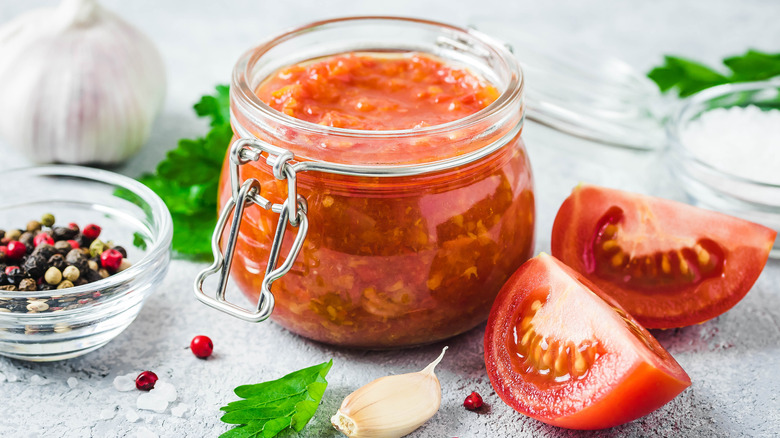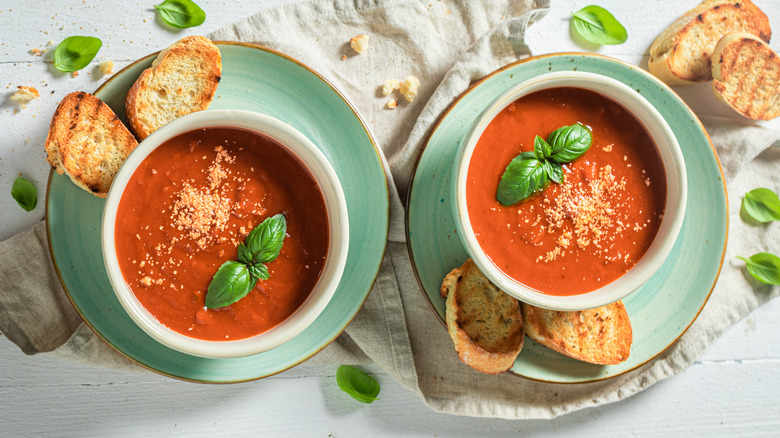The Difference Between Tomato Sauce And Tomato Puree
Tomatoes are a popular and necessary component to elevate variations of many authentic Italian dishes, such as octopus puttanesca, classic ragù alla bolognese, and penne pasta with spicy arrabiata sauce. When simmered for several hours, tomatoes break down into a thick and rich sauce that contains a sweet flavor, soft acidic notes, and a vibrant hue that many culinary fans equate to comfort food. But such hearty classics may also call for tomato puree in their recipes, leaving one to wonder, "What is the difference between tomato sauce and tomato puree?"
First, it's important to define each of their places in the culinary world such as what the two are and what they are used for. Tomato sauce, as The Kitchen Community puts it, helps to add rich flavors, thickened textures, and bright colors to dishes that are liquid-based, such as soups and stews. Aside from traditional pasta dishes, tomato sauce adds a rich depth to chili, tomato basil soup, and sausage, pepper, and onion rolls.
As stated by MasterClass, tomato puree combines two types of tomatoes: cooked and strained, and serves as a base for sauces and condiments, like pizza sauce and salsa. Indian cuisine also uses tomato puree, especially in dishes like chatakedar paneer and punjabi subzis, according to Tarladalal.
Look for differences in their textures and tastes
As Rachael Ray puts it, American tomato sauce is often sweet due to its added sugar content. Tomato purée, on the other hand, is just a purée of tomatoes, which is thin in texture.
Adding on to this, tomato puree is more acidic and fresh on the palate, according to MasterClass, whereas tomato sauce has an enriched sweet flavor, per Serious Eats. That's because tomato sauce has a much longer cooking time than tomato puree; the latter of which, is only cooked for about 10-15 minutes, as noted by The Spruce Eats.
In terms of texture, MasterClass mentions that tomato sauce is reduced to achieve that ideal thick and creamy consistency. This is the opposite of tomato puree, which as Rachael Ray noted above, is quite thin. According to The Spruce Eats, tomato puree is made by simmering tomatoes for a short time, blending the mixture, and straining it using a sieve, which helps to create that loose texture since it doesn't have time to reduce and thicken.

